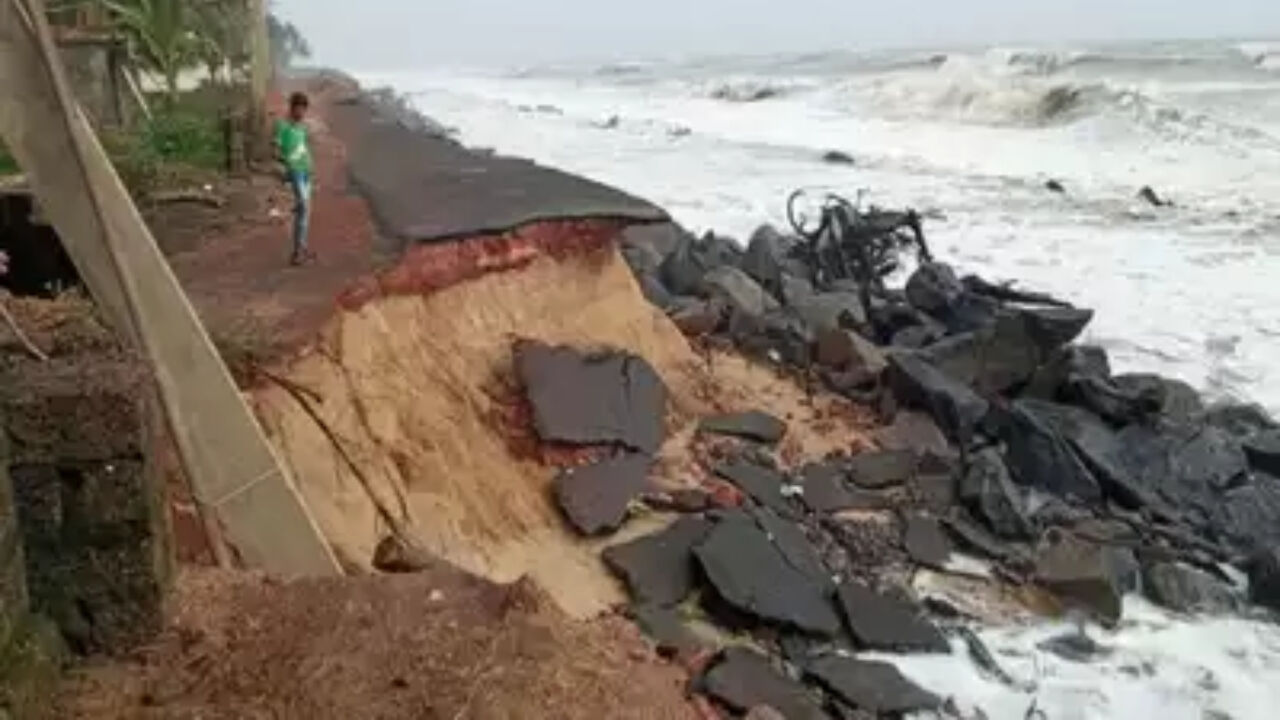
(45% of India’s 8,414-km long coastline is facing erosion, according to study published in Current Science based on satellite data over 15 years)
Analysis by senior journalist Mahendra Pandey
Janjwar. Mangalore in Karnataka is at a higher risk of flooding from rising sea levels because of melting glaciers, than coastal cities such as Mumbai and New York. The finding were revealed through data released by NASA. Over the next 100 years, glacial melt could push up Mangalore sea levels by 15.98cm compared to 15.26cm for Mumbai and 10.65cm for New York, concludes the study published in the journal Science Advances.
Mumbai and New York are traditionally believed to be the most vulnerable from sea-level rise. The findings are based on a forecasting tool, gradient fingerprint mapping (GFM), developed by the scientists at the US space agency's Jet Propulsion Laboratory.
Flooding is not the only problem with coastal areas. A first-of-its-kind survey of the world's sandy shorelines with satellite data found that they have increased slightly on a global scale over the past three decades but at the same time decreased in protected marine areas, where most of the beaches are eroding.
Erosion in protected marine areas could threaten plant and animal species and cultural heritage sites. Worldwide, the study found that 24 percent of Earth's sandy beaches are eroding, a coastline distance of almost 80,500 kilometres.
The study found that about a third (31 percent) of all ice-free shorelines is sandy or gravelly. Africa has the highest proportion of sandy beaches (66 percent) and Europe has the lowest (22 percent).
The team found that many of the world's non-protected beaches are undergoing change too, but not uniformly. About 24 percent of sandy beaches worldwide are eroding, while 27 percent are growing. Additionally, about 16 percent of all beaches are eroding at rates designated "intense" or "extreme," and 18 percent are growing at the same rates.
The researchers were able to break down these results by continent to find that beaches in Australia and Africa are experiencing more erosion than growth, a process scientists call accretion. The opposite is true for all other continents.
Asia is experiencing the highest rate of overall accretion, they discovered. This is most likely due to artificial coastline development in China and land reclamation, or draining land and making it suitable for human use, in places such as Hong Kong and Singapore.
The researchers gave several examples of locations where human activities have sped up erosion or accretion: Mining sand from Vietnam's Mekong River delta for use in making concrete and asphalt has caused steadily high rates of erosion that could jeopardize this biologically diverse region, as well as threaten the sustainability of its fishing industry.
On the other hand, the Tweed River Entrance Sand Bypassing Project, established in 2001 in New South Wales, Australia, pumps sand from the Tweed River to three beaches in Queensland, enlarging those beaches and improving navigation at the river mouth.
As much as 45% of India's 8,414-km long coastline is facing erosion, according to another study published in Current Science based on satellite data over 15 years. The study reports that close to 19% of the coastline is stable and about 36% is showing accretion, or expansion. The Indian coast has lost a net area of about 73 sq km.
The Andaman and Nicobar Islands face the most erosion, with close to 89% of the shoreline eaten away by the Bay of Bengal. At the other end of the spectrum is Tamil Nadu, which has gained the most new shoreline, with 62% of its coast gaining land. Goa has the highest percentage (52%) of stable shoreline.
A lot more study is required on coastline on urgent basis, as a large proportion of population resides in these areas. Climate change is also going to alter these sea shores.











